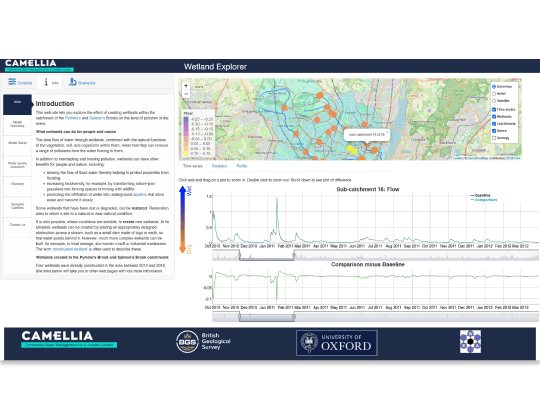
Wetland Explorer
Explore how wetlands can improve the health of a river. The Wetland Explorer lets you investigate how the creation of new wetlands within a catchment could affect the level of pollution in its rivers.
CAMELLIA / BGS
Author
camellia@bgs.ac.uk ❐
Email
Project website
Details
The slow flow of water through wetlands, combined with the natural functions of the vegetation, soil, and organisms within them, mean that they can remove a range of pollutants from the water flowing to them.
Some wetlands that have been lost or degraded, can be restored. Restoration aims to return a site to a natural or near-natural condition.
It is also possible, where conditions are suitable, to create new wetlands. At its simplest, wetlands can be created by placing an appropriately designed obstruction across a stream, such as a small dam made of logs or earth, so that water ponds behind it. However, much more complex wetlands can be built, for example, to treat sewage, stormwater runoff or industrial wastewater. The term ‘constructed wetland' is often used to describe these.
This interactive web tool uses two catchments in north London as an example: the Pymme's Brook and Salmon's Brook, both of which flow into the River Lea. After adding different numbers of constructed wetlands into these catchments you can examine what a computer model predicts would be the change in river water quality. You can also investigate how predicted changes in rainfall over the coming decades, due to climate change, might affect the flow of the river and its quality.
You can also read about how the tool has been used to support community groups in the area to consider where the creation of new wetlands should be prioritised.